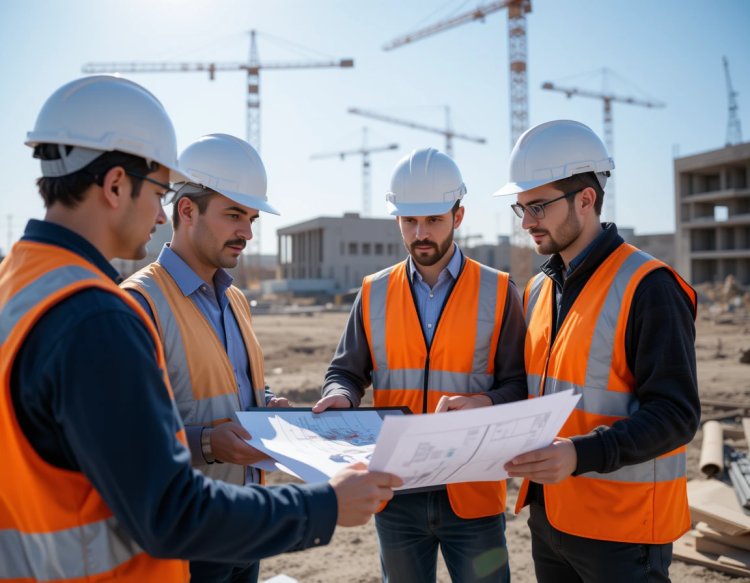The Importance of Integrated Design in Modern Construction
Discover the importance of integrated design in modern construction. Boost efficiency and quality—learn how to transform your next project today!
Share this Post to earn Money ( Upto ₹100 per 1000 Views )

When it comes to building a structure, whether it’s a sleek office building or a cozy home, the process is often far more complex than most people realize. Construction projects can run into costly delays, budget overruns, and frustrating miscommunications all because different teams work in isolation rather than together. This is where integrated design steps in, transforming how modern construction projects are planned and executed.
Integrated design is more than just a buzzword. It’s a collaborative approach that brings architects, engineers, contractors, and clients into the same room figuratively or literally right from the start. By working together from day one, everyone can align their goals, solve problems early, and create a better end product. Let’s dive into what makes integrated design so crucial in today’s construction landscape.
What is Integrated Design in Modern Construction?
Definition and Core Principles
At its heart, integrated design means breaking down the traditional barriers between different construction disciplines. Instead of working in silos, all parties contribute their expertise throughout the project lifecycle. This approach encourages open communication, shared decision-making, and a team mindset that values collaboration above all.
How Integrated Design Differs from Traditional Methods
Traditional construction often follows a step-by-step process: architects finish their plans, then hand them off to engineers, who then pass them to contractors. This sequential approach can cause delays and costly changes if issues pop up late in the game. Integrated design flips this model on its head by involving everyone early and continuously, which leads to smoother workflows and fewer surprises.
Benefits of Integrated Design in Construction Projects
Improved Collaboration and Communication
When teams collaborate from the outset, there’s less guesswork and more clarity. Everyone understands the project goals, constraints, and potential challenges, which makes it easier to find creative solutions together.
Enhanced Project Efficiency and Cost Savings
One of the biggest perks of integrated design is the ability to catch issues before they become expensive problems. Early input from various experts helps reduce rework, shortens project timelines, and keeps budgets in check.
Higher Quality and Innovation
Because integrated teams pool their knowledge, they can explore innovative materials, technologies, and techniques that might be overlooked in a more fragmented process. The result? Buildings that perform better and look great too.
Sustainability and Environmental Impact
Integrated design also supports green building practices by allowing environmental considerations to shape every decision. From energy efficiency to waste reduction, this holistic approach aligns with growing demands for sustainable construction.
Key Components of an Effective Integrated Design Process
Early Involvement of All Stakeholders
The sooner everyone is involved, the better. Bringing architects, engineers, contractors, and clients together early ensures all perspectives are heard and integrated into the plan.
Use of Technology in Integrated Design
Modern tools like Building Information Modeling (BIM) are game-changers for integrated design. BIM allows real-time sharing of 3D models and data, making it easier to spot conflicts, coordinate changes, and keep everyone on the same page.
Continuous Feedback Loops and Adjustments
Integrated design isn’t a “set it and forget it” process. It thrives on ongoing communication and iterative improvements, so the project evolves in response to feedback and new information.
Challenges and Solutions in Implementing Integrated Design
Overcoming Resistance to Change
Shifting to integrated design can feel daunting, especially for teams used to working independently. Education, showcasing benefits, and leadership support are key to easing this transition.
Managing Complexity and Coordination
Bringing many experts together can get complicated, but strong project management and clear roles help keep coordination smooth and focused.
Tools and Training for Effective Integration
Investing in collaboration technologies and training helps teams get comfortable with integrated workflows and maximize their potential.
Real-World Examples of Integrated Design Success
Across the globe, many successful projects demonstrate the power of integrated design. From faster construction times to higher-performing buildings, the results speak for themselves. For instance, a recent commercial development used BIM and integrated design principles to cut costs by 15% and reduce project duration by three months a win-win for all stakeholders.
Conclusion
Integrated design is not just a trend; it’s a fundamental shift in how we approach modern construction. By fostering collaboration, embracing technology, and focusing on shared goals, integrated design creates better buildings more efficiently and sustainably. For anyone involved in construction, adopting this approach is becoming less of an option and more of a necessity.
Ready to build smarter and stronger? Discover how DivineCo leverages integrated design to deliver exceptional construction projects tailored to your needs. Visit their website to learn more and start your journey toward a seamless, collaborative building experience today!













